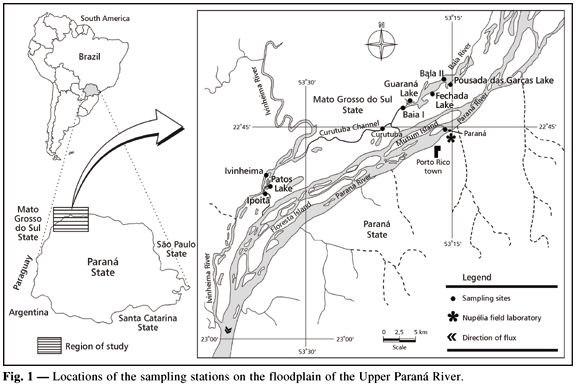Serrasalmus marginatus invaded the Upper Paraná River after construction of the Itaipu Dam in November 1982. This was followed by a reduction in abundance of the native species S. spilopleura. Analysis of the pattern of food resource use revealed that both species employ the same feeding strategy, eating mainly fish (whole fish or muscle fragments) and fins bitten off their prey. The diurnal activity period and the feeding rhythm were better-defined in S. marginatus. For young individuals of both species, food was taken in a significantly discontinuous manner (F = 2.83; p < 0.05 and F = 13.25; p < 0.05), with a peak at 4 p.m. Ontogenetic differences in diet, the strong feeding overlap of larger individuals of S. marginatus and smaller individuals of S. spilopleura, and the aggressiveness of S. marginatus in establishing feeding territories may have contributed to the success of the invading species.
feeding; feeding rhythm; species introduction




